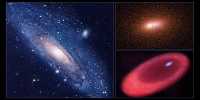The Inspiration 4 crew made a winning splashdown Saturday evening off the east coast of Florida, marking the end of the first fully private, all-civilian space mission. SpaceX’s Go-Searcher recovery ship was pulled into a crew dragon capsule, called Resilience, less than an hour after the splashdown. The crew was then flown by helicopter to NASA’s Kennedy Space Center, where they underwent quality medical tests. The successful completion of the mission is a major victory for Elon Musk and SpaceX (and, more formally, NASA, which has funded the development of the technology), which has managed the entire mission.
This is probably our clear signal that a new dawn of space travel has officially arrived here. Benji Reed, senior director of SpaceX’s Human-Spaceflight program, told reporters that the company is growing in number of inquiries from potential customers for personal missions. He said the company can fly at least three, four, five, six times a year.
Of course, mission commander Jared Isaacman is not the first millionaire to go into space. This summer, Richard Branson and Jeff Bezos both conducted their own orbital pleasure rides in vehicles developed by their respective companies, Virgin Galactic and Blue Origin. But those trips were significantly shorter – Bezos and three of his crew went into space and returned in less than 15 minutes, essentially traveling under a long parabolic pressure. In contrast, the Inspiration 4 crew spent three days orbiting the Earth at an altitude of 590 kilometers – more than the International Space Station, meaning they were the most “outer” of all the people in space.
During their mission, they traveled around the earth an average of 15 times a day. While in orbit, the crew conducted a handful of science experiments, mostly gathering information on themselves, in order to further our understanding of the effects of spacecraft on the human body. The crew spent some time in the large glass-domed window, calling SpaceX “cupola”, taking pictures of space.
With the exception of Isaacman, who made his fortune from his payment processing company Shift 4 Payments, the crew included medical assistant and childhood cancer survivor Hailey Arceneaux; Geologist Sean Proctor; And Lockheed Martin engineer Chris Sembroski.
Among the other first for the crew, Arceneaux was the youngest American to go into space and the first to go into space with an artificial limb; Proctor was the first black woman to launch a space mission.
















